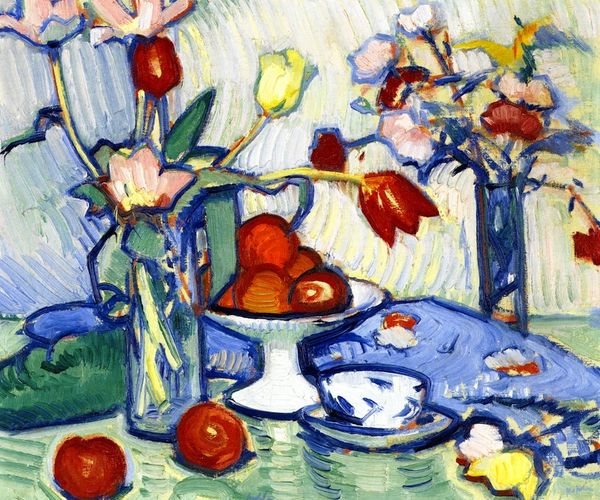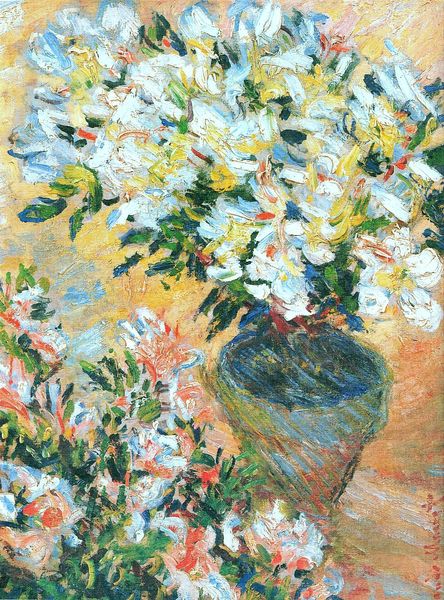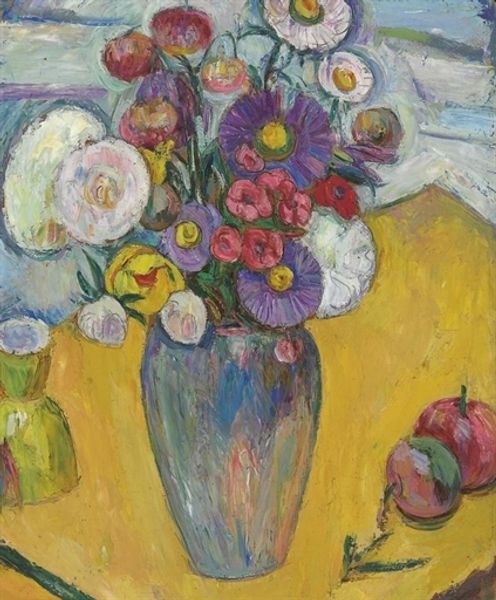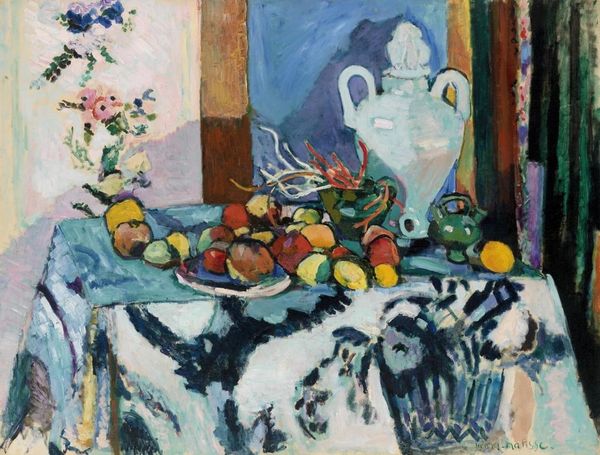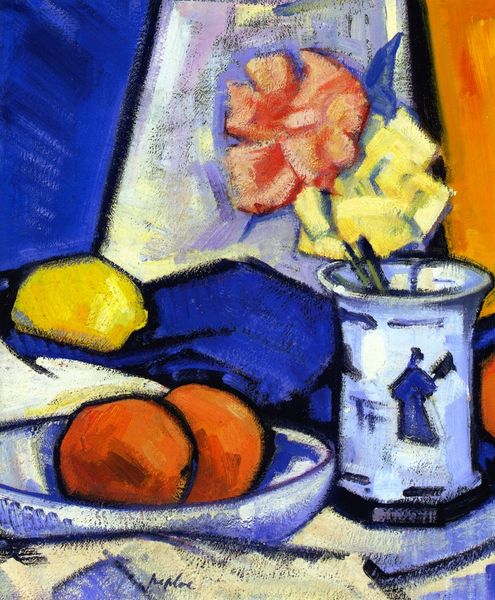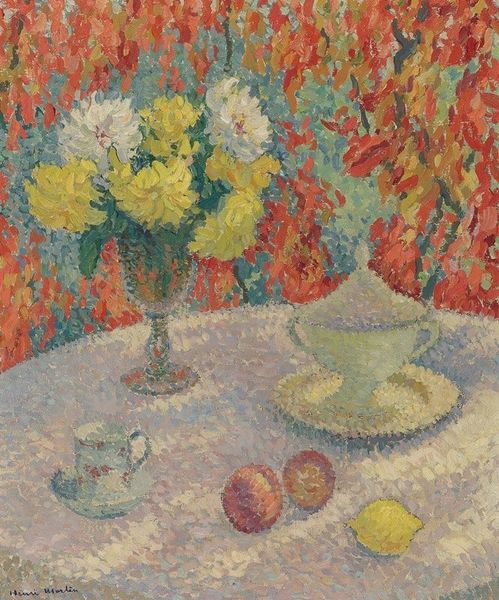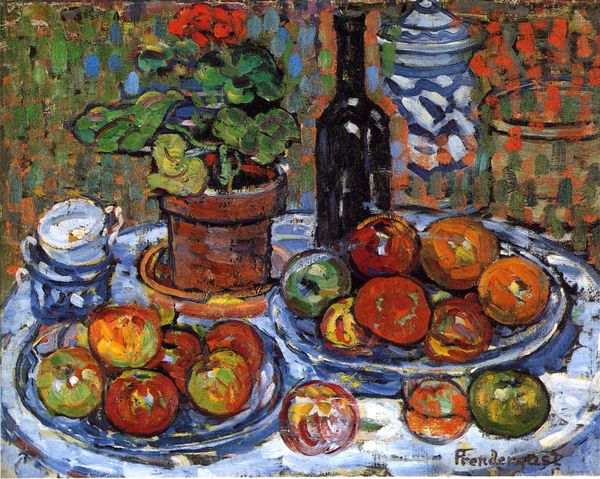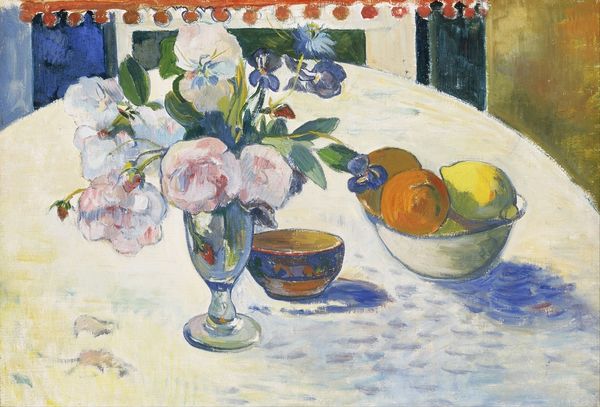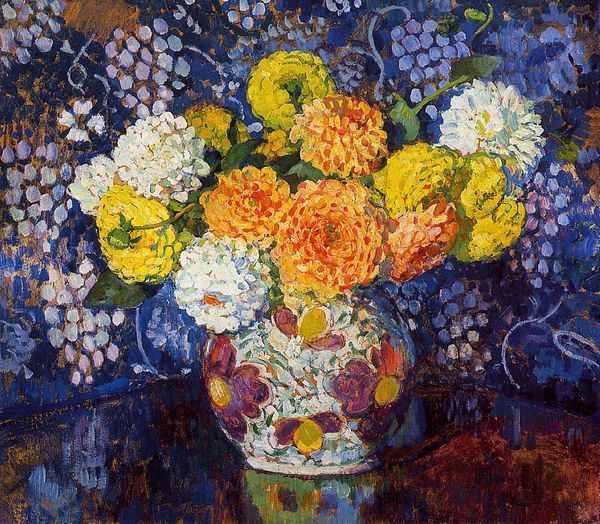
Copyright: Public domain
Editor: Here we have Samuel Peploe's "Tulips and Cup," painted in 1912 using oil on canvas. The vibrant yellow background immediately grabs your attention, creating such an energetic mood. What do you see in this piece beyond the initial vibrancy? Curator: Well, beyond the obvious Fauvist influence in the use of non-naturalistic color, I see a coded dialogue about domesticity and display. Think about it: Whose domestic space are we looking at? Was the placement of objects empowering or restricting, considering gendered expectations around the home? How might those tensions manifest in the bright, almost aggressive application of paint? Editor: I never thought of it that way! It felt very... celebratory. Curator: It appears celebratory on the surface. But, consider the context. Early 20th-century Scotland was experiencing significant social change; think of women’s suffrage movements and shifting class dynamics. How did this affect not only male artists such as Peploe, but also a female viewership? Does the image of cut flowers, beautiful yet severed from their roots, prompt ideas around class, labor and loss? Is it also worth pondering issues around coloniality and display with respect to flowers and fruit within domestic British Art and lifestyle? Editor: That's a really interesting perspective. The severing of the blooms is not really something I focused on... But you're right. They are in this isolated space, even confined. Curator: Exactly! The tulips themselves, presented as an object within a certain cultural paradigm of home-ownership. The fruits perhaps symbolic of the historical exploitations from colonies, laid in domestic presentations. We may reflect on the impact such paintings made within cultural consciousness – of everyday items now viewed in a setting that questions its origin. Editor: I'm walking away from this conversation thinking a lot about the politics ingrained within even a seemingly simple still life! It makes me reconsider art historical interpretations. Curator: Indeed. By connecting these visual representations to critical historical thought, we start revealing compelling social commentary and fresh understanding, even within seemingly innocent settings.
Comments
No comments
Be the first to comment and join the conversation on the ultimate creative platform.
